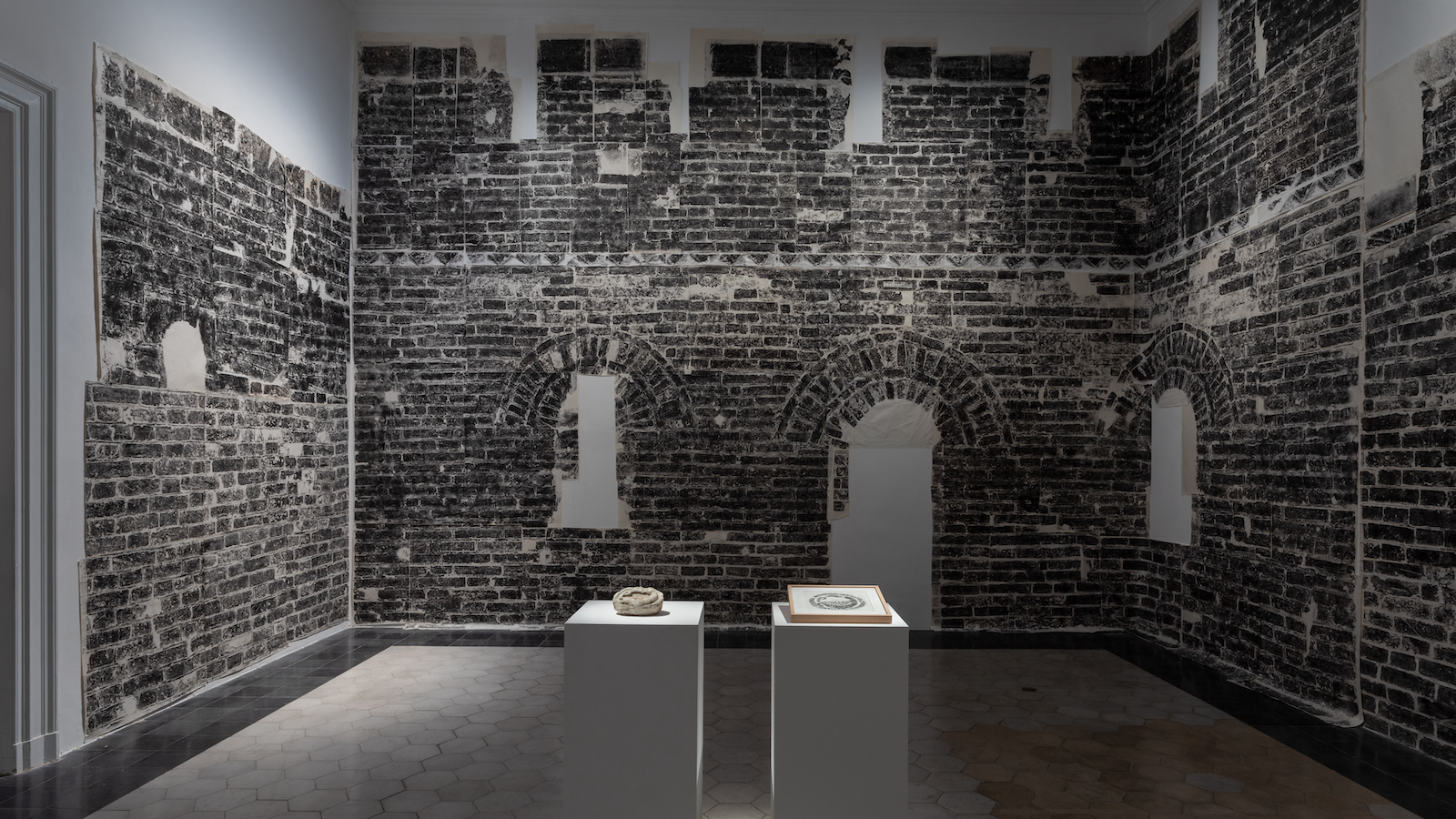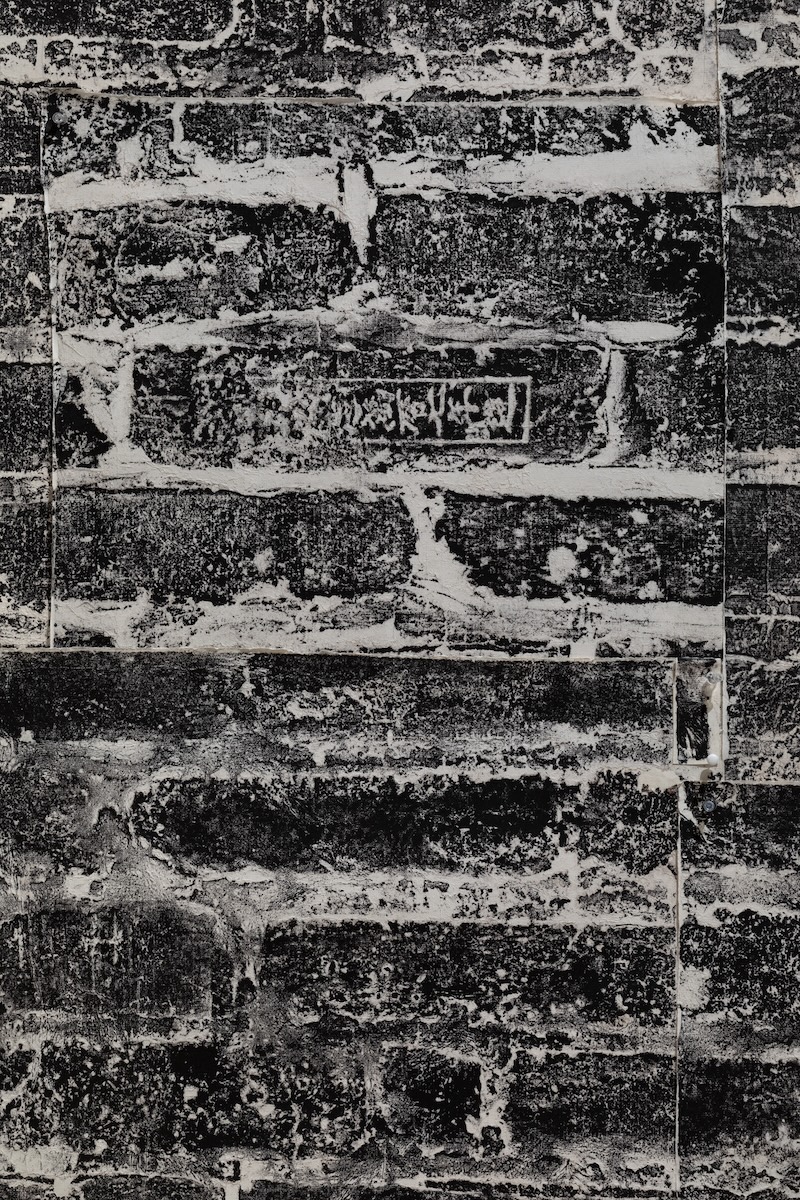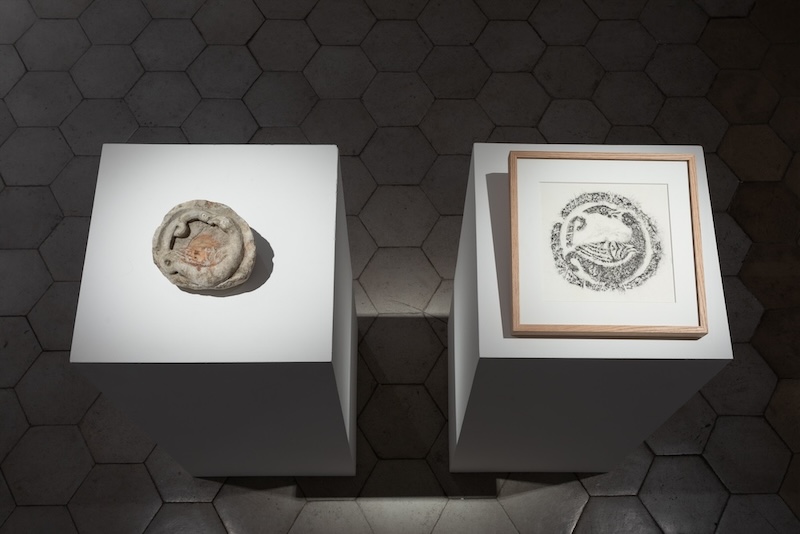
The Wall
In the first gallery room, we find The Wall (1988-1999), the first rubbing that Xu created representing a tower of the Great Wall of China, documenting its texture, scale, and grandeur. The technique involves first covering the ancient surface with a thin layer of plastic, then with a large covering of Xuan paper, and lastly ‘poaching’ it with ink-soaked cotton wads. The rubbing is gently peeled away from the surface, bearing the imprint of the walls. Produced in the 1990s, The Wall is a critique of the world’s isolationism at the time. Xu then moved to New York, where he began exhibiting his work locally and internationally. His work moved towards advocating Chinese cultural singularity in its struggle with Western materialism. In 2007, he returned to Beijing as Vice President of the Central Academy of Fine Arts, where he had begun his teaching career nearly 40 years earlier.

Detail of the rubbing (photograph by Daniele Molajoli)
Fragment
In addition to the main installation, Xu Bing also created a smaller rubbing of a fragment from AAR's Norton–Van Buren Archaeological Study Collection.
The cataloguing information for the fragment is:
Fragment of architectural decoration with amphisbaena?
Late antique–early Medieval
Corse white marble
H., 17,5 cm.; W., 20 cm.; Th., 5,9 cm.
American Academy in Rome, Norton–Van Buren Archaeological Study Collection, Inv. No. 8939
Provenience: Unknown
Provenance: Unknown; in the collection before 1948
The small oval relief depicts a bird, possibly a dove, to the right, with its head is turned back and the neck fitting along the margin. The tail terminates into a serpent, scaleless and with a large circular eye and dip drilled pupil. The jaw is open as if to swallow the bird’s head, whose beak is, in fact, in his mouth. The image is possibly of an amphisbaena, a mythical animal with two heads, described in ancient authors, Dante and very popular in the Medieval bestiary.

The ancient or medieval fragment (left) and Xu's rubbing of it (right) (photograph by Daniele Molajoli)